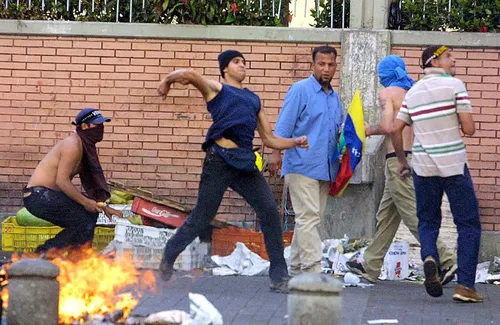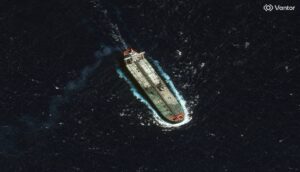
The 2002 coup against then president Hugo Chávez was decisive for Venezuela’s opposition to change its stance. According to historian at the Central University of Venezuela Carlos Franco Gil, whether in acts against the government or in pre-election rallies, anti-Chavista sectors began to make their actions more aggressive in moments of greater political tension.
According to Gil, groups linked to the right began to adopt this conduct after the actions of the leaders on the day of the coup and also due to a rupture in the opposition itself.
“There is a theory of the coup within the coup. There were social democratic sectors – such as the group of current candidate Manuel Rosales – who supported the acts. This theory is that there were agreements in the broad sector (social democrats, CTV, among others), and that the extreme right gives a blow to these agreements through the decrees that annihilate the rule of law in Venezuela,” Gil told Brazil in fact.
On April 11, protesters against Hugo Chávez’s government went to the Miraflores Palace, headquarters of the Venezuelan government, to demand the then president’s departure. Two figures began to gain prominence in the events at this time: Pedro Carmona Estanga, then president of the largest business entity in the country, Fedecámaras, and Carlos Ortega, president of the Venezuelan Workers Confederation.
Chávez is coerced by the Armed Forces to resign, under threat of bombings against the Government Palace. Refusing to leave office, the president ends up arrested and forcibly removed from Miraflores by the coup military. The blow was done.
But the following day was marked by the coup within the coup. On April 12, Pedro Carmona Estanga goes on television without the consent of other sectors of the opposition and states that he was assuming a transitional government. He announces the dissolution of the National Assembly, the suspension of the work of the Supreme Court of Justice and overturns all of Chávez’s measures.
“The leaders of April 11th were not present on April 12th. This fragmented and began to split the opposition. That episode was symptomatic”, says Carlos Franco Gil.
After that, the Chavista protests gave their revenge and took to the streets to demand the return of the elected president until, on April 13, Chávez regained power and put an end to the coup that lasted three days and ended in failure. From that episode onwards, the opposition sectors lost their reference and were unable to establish a strong and lasting political leader who could accumulate forces to confront Chavismo.
“Opposing a government does not mean that everyone thinks the same. There was a series of back and forth with some moments of unification, like in 2012 and 2013 around Henrique Capriles, but then he was kicked because he said he wouldn’t send people to the slaughterhouse [nos protestos de 2014]. So the opposition does not have a homogeneous stance and was led by different sectors, sometimes by the Social Democrats, sometimes by Capriles and in the last eight years by the extreme right”, he states.
In recent years, the opposition has adopted diffuse and often ineffective tactics. First, with the boycott of the 2005 legislative elections. By not participating in the election, the National Assembly was dominated by Chavismo and right-wing groups lost their voice in Parliament. Upon realizing the ineffectiveness of the action, the tactic changed in the following years and the opposition returned to compete to form the Legislature.
Later, using the extreme right as a reference, Venezuelan opposition protesters began to use violent protests to express their position against the government. In 2017, during a tense day of acts, a series of attacks on police officers and civilians were recorded. A young man was even mistaken for a Chavista protester and was set on fire in broad daylight in Altamira square, where opposition events were concentrated.
According to Carlos Franco Gil, this position is a symptom of the leadership of an extreme right that occupies the lack of strong right-wing names in politics from 2014 onwards. “The opposition is progressively beginning to take a much more violent stance. A climate of great tension was created, which ended with this disastrous balance from 2014 to 2017”, concludes Gil.
Demonstrations on April 13
Chavistas will take to the streets this Saturday (13) to celebrate the former president’s return to power on April 13, 2002. Protesters will hold two marches that will meet at the Miraflores Palace.
In recent days, demonstrations have been held by the Three Powers and Chávez supporters. With the motto “22 years since the coup d’état, the people will never be betrayed again”, the events recalled the remarkable episodes of those three days and condemned the actions of the opposition at that time.
Editing: Lucas Estanislau

Source: www.brasildefato.com.br

